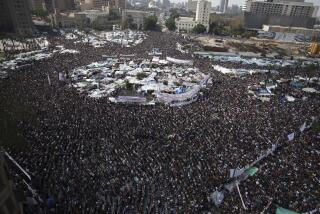Torture in Brazil: A REPORT BY THE ARCHDIOCESE OF SAO PAULO, edited by Joan Dassin; translated by Jaime Wright (Vintage: $9.95; 232 pp.)
- Share via
Observing the exuberant competitiveness of Brazilian politics in 1986, one might find it hard to imagine that this vital country of 134 million people is just emerging from 20 years of dictatorship. The campaign cliches that would sell candidates as blithely as soap offer no clues as to what has been so recently endured or to what is at stake. That is why “Torture in Brazil” is so timely and so important.
The book’s purpose is revealed more readily in its Portuguese edition title, “Brazil, Nunca Mais” (Brazil: Never Again). As editor Joan Dassin notes in her introduction to the English-language edition, that purpose is to “ensure that the violence, the infamy, the injustice and the persecution of Brazil’s recent past should never again be repeated.”
“Torture in Brazil” is not the first book to deal with this grisly subject. Since the 1966 publication of “Torturas e Torturados” (Tortures and the Tortured) by politician and journalist Marcio Moreira Alves, many such studies have appeared. But this latest contribution amasses the most comprehensive accounting of human rights abuses and offers irrefutable proof of the centrality of torture to the military justice system.
The book summarizes the findings in a 7,000-page report prepared over a five-year period by a team of 35 researchers. Sponsored by Cardinal Paulo Evaristo Arns, archbishop of Sao Paulo, and coordinated by Presbyterian minister Dr. Jaime Wright, the project draws upon more than 1 million pages of records of military court proceedings between 1964 and 1979. It records the testimony of 1,843 political prisoners, documents 283 types of torture, locates 242 clandestine torture centers, and identifies 444 individual torturers.
“Torture in Brazil” does not make for easy reading. Nevertheless, it is being read in Brazil. More than 100,000 copies of the Portuguese edition were sold during the book’s first 10 weeks on the market. It should also be read in the United States. As this book notes in passing, and as other books, like A. J. Langguth’s “Hidden Terrors,” have elaborated, Brazil’s infamy was also the infamy of the United States. The U.S. government was a party to the undermining of Brazil’s democratic system and an underwriter of the subsequent regime of surveillance and torture.
Brazil’s new National Congress, to be elected in November, will serve also as a constituent assembly to draw up a new constitution. This is a critical juncture. Much of the debris of the authoritarian period remains in the law books, and it is not entirely clear that newly invigorated civilian institutions can overwhelm the extensive and still ambitious intelligence and security network.
To shape its own future, a people must deal straightforwardly with its past. Its collective memory must be jogged from time to time, lest would-be tyrants reassemble history’s scattered shards in tightly sealed vessels that allow for little seepage of unofficial truth.
More to Read
Sign up for Essential California
The most important California stories and recommendations in your inbox every morning.
You may occasionally receive promotional content from the Los Angeles Times.













